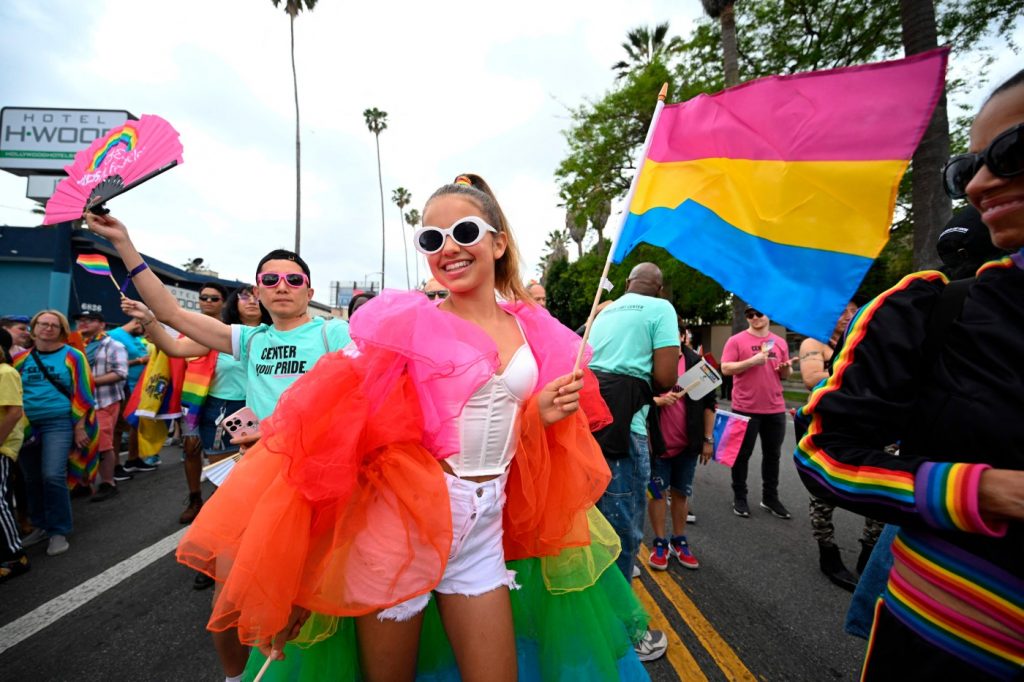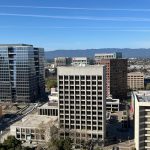The U.S. Census Bureau wants to ask American residents about their sexual orientation and gender identity, a move seen by activists as a long-overdue form of formal recognition that happens to be coming during a time of mixed acceptance and hostility.
“Any kind of inclusivity is welcome. Visibility is always good,” said Manny Muro, vice president of OC Pride, a group that works to build recognition and fight stigma for the LGBTQ+ community in Orange County.
“There hasn’t been an accurate count of our community for years, maybe ever,” Muro added.
“And having this, in the census, will help make sure that federal dollars aimed at fighting discrimination, and helping people in need, won’t ignore us.
“We’ll see where this takes us.”
It’s unclear exactly how sexual orientation and identity questions will be phrased or when they will be asked.
The Census Bureau said May 1 that it is seeking public comment aimed at shaping future questions about sexual orientation and gender identity, a formal step in what typically is a multi-year process before adding new questions to an upcoming census.
The questions would appear first in the American Community Survey, a tracking of American life that the Census Bureau conducts every year. After that, orientation and identity questions could appear on the next census – a head count of every person living in the country – slated for 2030.
The Census Bureau said it wants the information to paint a more complete portrait of America’s population, and to help other federal agencies covering everything from health care and banking to the environment.
It won’t be the first time the federal government has asked about sexual identity and orientation.
Since 1990, the census has asked American residents if they live in same-sex relationships, a status that researchers say includes roughly 1 in 5 LGBTQ people at any particular time. Also, for many years, the Centers for Disease Control has asked more specific questions about orientation and identity. Answers from those questions have created a database that has been used to estimate the number of gay and gender-fluid Americans.
But researchers suggested new census data based on specific questions about orientation and identity could be valuable because it would be a fully national account. The data also could weave in other information – about income, race, education, health and living situations, among other things – that would offer details not easily available in current data.
“Having a top-line number from the census will help paint a more complete picture,” said Kerith Conron, director of the Blachford-Cooper Research Center at the Williams Institute, a non-profit at UCLA Law School that conducts research on sexual orientation and gender identity law and public policy.
But the Census Bureau’s move to count numbers connected to the LGBTQ+ community – and of people who express other gender identities, such as non-binary – comes at a time when the broader American public is sending mixed signals to those communities.
On the one hand, everything from mainstream TV commercials to national polling suggests straight America increasingly is accepting of gay life. And shifts in polling numbers, over time, also suggest that official recognition by the federal government has been part of that evolution.
Opinions about gay marriage, for example, changed dramatically before and after the Supreme Court’s 2015 ruling in Obergefell v. Hodges, which legalized same-sex unions. Prior to the ruling, about 41% of Americans told Gallup they “approved” of gay marriage. Six months later, public approval shot over 50%. By 2022, according to Gallup, approval stood at about 71%.
But acceptance of gay marriage, and other issues related to gay life, has come during a time when anti-gay sentiment has grown loud and often threatening.
Related Articles
California’s great exodus finally slows as population increases after 3-year decline
Census change will lead to more data on health of Middle Eastern, North African people in US
Nearly half of residents struggle to pay bills in one California city
California set to be less White, at least in census data
US changes how it categorizes people by race and ethnicity
Hate crimes targeting members of the LGBTQ+ community have risen steadily since 2017, according to federal and local data. Likewise, some states and municipalities have passed laws aimed at limiting gay and transgender access to health care and some public services.
And last year, when a conservative commentator told attendees of the 2023 Conservative Political Action Conference that “transgenderism must be eradicated from public life entirely” he drew a round of applause.
Still, Muro, of OC Pride, said he’s confident that new census data about gay America won’t be weaponized.
“That’s going to happen with or without the data we’re talking about,” Muro said. “We’ve always been a target.”
Instead, he suggested new census data could provide “data and evidence of prejudice” against gay and transgender people.
“There isn’t a downside,” he said.
A new census tracking of gay and gender-fluid Americans also could help answer a question that’s embedded in existing data about those groups: Why are young people so much more likely than older people to identify as LGBTQ?
Last year, using data from the Centers for Disease Control and other numbers, the Williams Institute estimated that about 13.9 million Americans ages 13 and older identify as LBGTQ, a number that represents about 5.5% of American adults.
That poll found California has the largest number of LGBTQ adults, nearly 1.5 million, but a slightly below-average ratio (just 5.1%) when compared with the state’s overall population.
That same survey also found young people, nationally, are much more likely to identify as LGBTQ than are older people. Some 15.2% of people ages 18 to 24 and 9.1% of people ages 25 to 34 identify in that group, compared with 2.7% of people ages 50 to 64 and 1.9% of people ages 65 and older.
Researcher Conron said such differences reflect acceptance within different age cohorts, not human behavior.
Muro of OC Pride agreed, adding that he believes the numbers expressed in younger groups are closer to reality than the response rates among older Americans.
“When the census takes its poll in the future, the numbers, overall, will look more like what you’re seeing with younger people now,” Muro said.
The same report found that gay and gender-fluid groups suffer economically – in employment, income and poverty – even though those groups are more likely to graduate high school, college and get advanced degrees, than are other groups.
That’s a puzzle, demographically. Other census data, tracking other minority groups, consistently link educational attainment to economic success. Conron said she hopes new census data will offer clarity on why that’s not true for the LGBTQ community.
The Williams Institute also is working on a new report – one that will track locals in Los Angeles, among other metro areas – asking a totally different set of questions of the LGBTQ community.
That report will focus on how different groups thrive in different communities, asking questions such as “what brings you joy?” and “how do you contribute to your community?”
“Demographic research so often is about finding a problem,” Conron said. “I think this goes in a different direction.”
That report is expected to be released in June.


